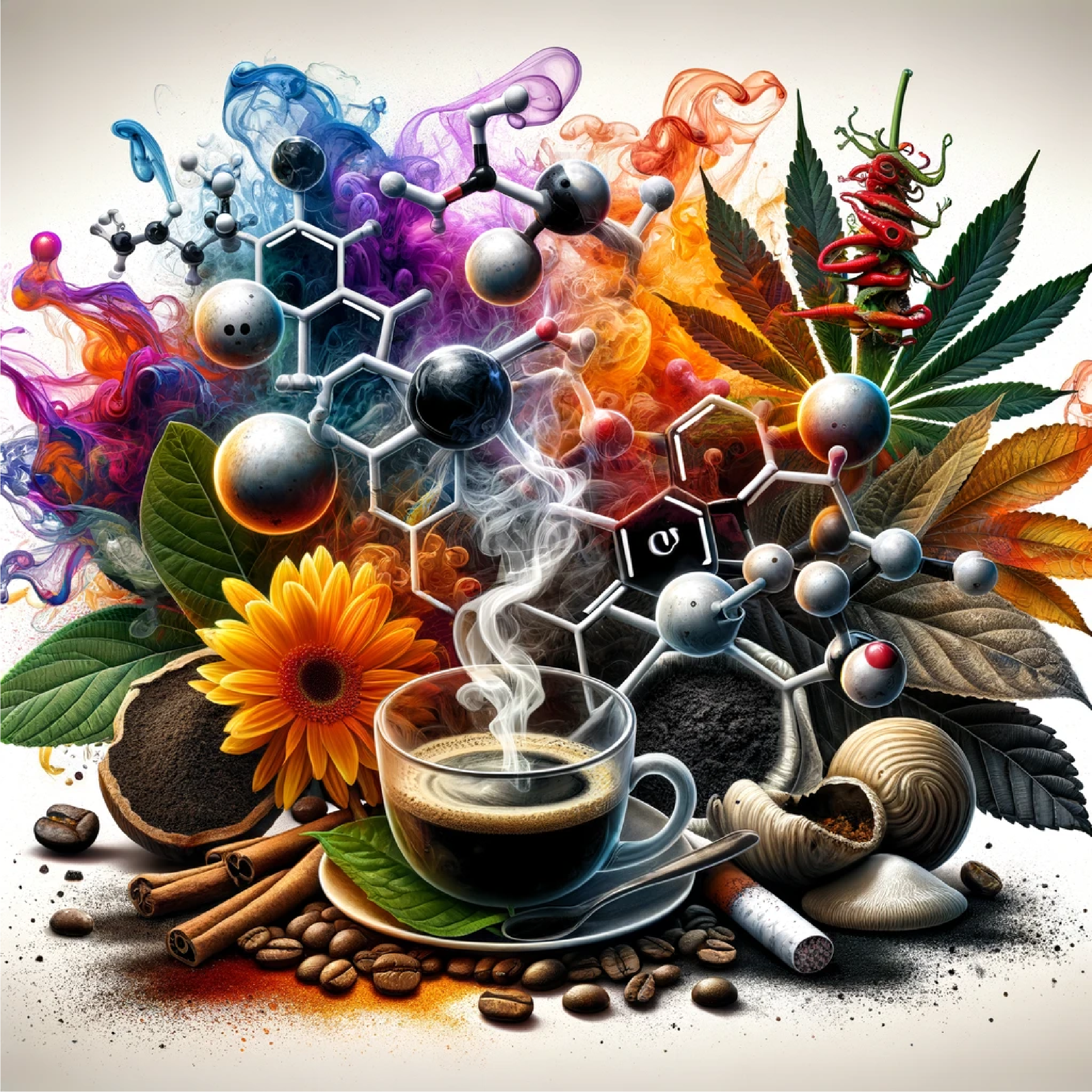You’re already very familiar with alkaloids, whether you realize it or not.
Are you a coffee drinker? Then you’ve enjoyed many cups of the alkaloid caffeine.
Cigarette smoker? Then you’ve been puffing away on the alkaloid nicotine.
Love red hot chili peppers? Then you’re either a fan of Anthony Kiedis or the alkaloid capsaicin.
The list of alkaloids that are all around us goes on and on. For instance, just as capsaicin is responsible for the spicy flavor in those chili peppers, piperine is an alkaloid that gives black pepper its signature pungency. And chances are, you’ve taken one of the 50+ alkaloids that are used in a variety of medicines, from cough suppressants and pain relievers to anti-malarial agents and chemotherapy drugs. Some commonly known medicinal alkaloids include codeine, morphine, ephedrine, and quinine.
Kratom users also rely on the benefits of its alkaloids. The leaves of the Mitragyna speciosa tree (kratom) contain over 40 alkaloids, including mitragynine and 7-hydroxymitragynine, which produce a wide range of effects on the body. These effects vary depending on the dosage and the individual. In low doses, kratom has stimulating effects, while in high doses, it can be sedative and pain-relieving.
Alkaloids are the key to it all.
What Are Alkaloids?
The name alkaloid (“alkali-like”) refers to the similarity of these organic compounds to inorganic alkalis, which react with acids to form salts. Alkaloids are very structurally diverse, with many different possible classifications and groups. One popular method divides them into the following categories:
Due to their chemical classification as an amine, alkaloid names generally end in the suffix -ine (or -in). Amines are a family of organic compounds that are derived from ammonia and contain a nitrogen atom. These include not just alkaloids, but also neurotransmitters such as dopamine and histamine.
Alkaloids are mainly found in plants, although they are also produced by other organisms like bacteria, fungi, and even animals. For instance, solenopsin is an alkaloid found in the venom of fire ants. Other insects, reptiles, amphibians, mammals, and birds are also known sources, along with marine life such as sponges, corals, and microorganisms.
There are currently over 27,000 compounds listed as alkaloids in the Dictionary of Natural Products (DNP), and over 21,000 of these come from plants. About 20% of plant species contain alkaloids.
The main function of alkaloids in plants is to protect them from predators and regulate their growth. Alkaloids provide a chemical defense against herbivores, microorganisms, or competing plants. While this has been evolutionarily beneficial for the plants’ survival, such defenses have not deterred humans, who have managed to harness these natural powers for their own needs.
The pharmacological activities of alkaloids vary greatly. Just some of these include:
- Analgesic
- Antiarrhythmic
- Antiasthma
- Antibacterial
- Anticancer
- Antihyperglycemic
- Anti-inflammatory
These properties have made alkaloids particularly useful in both traditional and modern medicine. Obviously, some alkaloids are also used recreationally. Alkaloids like psilocin, psilocybin, and mescaline produce psychotropic, hallucinogenic effects. Others provide stimulation, including cocaine, caffeine, and nicotine. And of course, we all know the story of morphine.
But did you also know that the discovery of morphine is actually where all of our scientific understanding of alkaloids began?
Alkaloid History 101
Humans have been using alkaloids since ancient times. Archeologists and historians have uncovered evidence that stretches back over 4,000 years showing that our ancestors relied on alkaloid-containing plants for a variety of purposes.
These uses were characterized as “Murder, Magic, and Medicine” by author John Mann in his book of the same name:
Despite this long history, we didn’t actually begin to study and understand the science of alkaloids until the 19th century. In 1805, German pharmacist Friedrich Sertürner isolated morphine from opium, becoming the first person to successfully extract a pure alkaloid. This laid the groundwork for the synthesis of further alkaloids, revolutionizing modern pharmacology.
Later developments in the 19th century saw cocaine isolated from coca leaves and nicotine from tobacco, among many other discoveries. The 20th century followed with breakthroughs involving alkaloids such as vinblastine and vincristine, anti-cancer agents derived from the Madagascar periwinkle. In today’s scientific world, alkaloids continue to guide research for novel drug therapies. For instance, in 2020, the Journal of Natural Products reported 316 new alkaloids with 25 different biological activities.
When it comes to kratom, the alkaloids mitragynine and 7-hydroxymitragynine have been studied extensively in recent years. Check out our deeper dive into what exactly makes kratom’s alkaloids truly unique.
Final Thoughts
We are surrounded by alkaloids every day. In fact, it would be understandable for humans to feel as though they were put here on Earth just for us. After all, we have literally and figuratively extracted countless benefits for mankind from alkaloids over thousands of years, and new innovations are bound to occur in the future.
From being mysterious potions in ancient societies to lifesaving drugs in modern medicine, alkaloids have proved themselves as remarkable examples of nature’s power.






